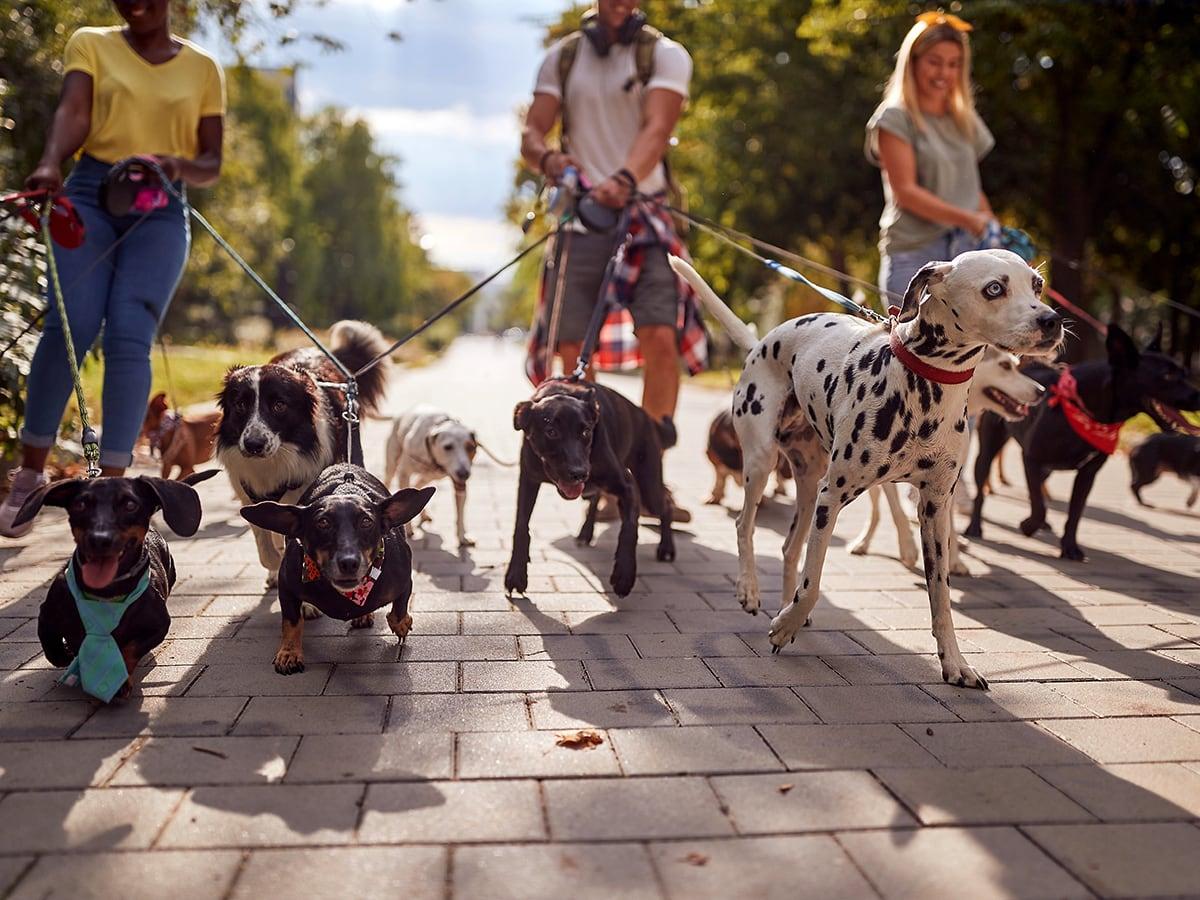From ancient Roman citizens strolling with their canine companions along cobblestone streets to modern city people navigating busy sidewalks, humans and dog-walking have had an interesting relationship.
Imagine this - You, in your sweatpants, messy hair, a nice cup of coffee in one hand. All this while desperately trying to maintain your dignity as your dog takes off like they’re auditioning for the next Grand Prix - a scene definitely relatable to most of us. But it’s not your dog’s fault. Just like you stepped out for a run with the right gear, the right music, and the right mood, your dog also needs a good setting to be tied with a leash and enjoy the walk with you while obeying you.
How to Teach a Puppy to Walk on a Leash?
Here’s a step-by-step guide for you – (1)
Step 1 - Choose the right equipment. Use a sturdy and comfortable leash that is at least 4-6 feet long.
Step 2 - Don’t just wear your shoes and start walking. Let your dog get familiar with the feeling of a leash around its neck. Keep the collar or harness on in the house and let it walk for some time. Treats are always a good option to reward good behavior. Use them when your dog wears it like a good boy.
Step 3 - Start indoors. Choose a small and confined environment like a hallway where there aren’t many distractions. Choose which side you want the dog to walk. Hold the treats in that hand and keep rewarding the dog for walking beside you and not pulling.
Step 4 - Choose a command – ‘walk’ or ‘let’s go’ or whatever you like. Use the same command every time you want it to start walking.
Step 5 - Step outdoors but choose an environment that is quieter and with few distractions. Keep the walks short the first few times.
Step 6 - Stop walking if your dog starts pulling. Wait for your dog to come by your side again. Give a treat for coming back and then start walking again.
Step 7 - You can now step into the busy streets. Don’t go to Times Square level directly. Move up the traffic gradually. Don’t forget to keep rewarding the dog. Positive reinforcement works the best.
Step 8 - Don’t make the dog walk too much. 15-20 minutes is a good enough time. And always end the walk on a high note. You want your dog to look forward to many more of them. (you can maybe try teaching your dog fist bumping)
Remember to be patient throughout the training. Some dogs may learn it in the first go, while others, especially the ones with a more independent mind, can take a while. Some may also exhibit stubborn behaviors. Patience and treats are the way to go!
How to Leash Train a Dog That Pulls
You must understand that dogs are curious by nature. When on a walk, they would want to explore all the new smells and people (or maybe they are doing a survey on which company’s tyres are best to pee on). It can be a little difficult to keep this excitement in control at times.
Here are some tips for you to leash-train a dog that pulls – (2)
Reward your dog every time they exhibit good behavior. The dog will soon understand that walking calmly = treats.
Do not pull back. It will only make your dog pull more because of the ‘oppositional reflex’ (google it).
Stay there and wait for your dog to look back at you. When it does, give a treat or praise the dog. If the dog doesn’t look back, praise every time the leash slackens. And if that doesn’t work, well, just call out their name.
Stop being predictable. Change directions randomly and when your dog turns and follows, praise or reward. This way, they will pay more attention to you and your movements.
Try less crowded areas with minimal distractions.
Lastly, be patient and consistent. (this looks like an advice that could work for everything in life)
How Long Does it Take for a Dog to Walk on a Leash?
It should take around 3-4 weeks in general for a dog to learn how to walk on a leash. However, it may depend on a variety of factors – dog’s age being the biggest one. Just like in humans, young age in dogs comes with a quick learning ability as it works like a sponge – will absorb almost everything. But as age grows, it could become a little difficult as the dog would have already established a walking pattern. Having said that, there’s nothing that can’t be taught to our canine buddies with enough patience, consistency, proper technique and lots of love. (3)
Should You Let Your Dog Sniff While Walking?
Dogs are about 100,000 times more effective at being able to sense smell than people are. They have around 1,100 genes that bake their sense of smell into their DNA, while humans have just about 800. They also have about 20 times more odor-receptor cells than humans. All these would be of no use if you don’t let them explore their curiosities. (4)
When they stop at a place during a walk to sniff, they are not only trying to determine if they like the smell or if it is good enough to pee on it but also how many other dogs came here before. So, there’s no particular reason as such for you to not let them sniff while walking.
However, don’t let the sniff breaks be too long. You don’t want your dog to feel that they are in charge of the walk now. Short breaks, on the other hand, can be a good rest break for you too.
More About Spot Pet Insurance
We’ve given you the perfect step-by-step guide to leash train your dog, there’s one more thing we would like to do for you – Save your vet expenses by up to 90%.
Dog Insurance can help provide financial assistance for eligible veterinary care in case of unexpected accidents, illnesses, or injuries. Our plans can help pet parents manage the eligible costs of covered veterinary care and help ensure that their pets can receive the best treatment possible. Here are some ways that Spot pet insurance plans can help:
Covers Unexpected Veterinary Costs: Spot pet insurance plans cover the eligible costs of unexpected veterinary treatments, such as emergency surgeries, X-rays, and prescription medications for covered conditions.
Customizable Plans: Choose your annual limit, reimbursement rate, and deductible from a range of options, and create the plan that will fit the needs of your pet and your budget.
Peace of Mind: With Spot pet insurance plans, pet parents can know that they can provide the best care for their pet with less worry about the cost.
To learn more about Spot Plans or to get a free quote, click here.

With 10 years of experience as a pet parent, I aim to empower pet owners with insights into pet insurance and maintaining their pet's well-being. I aspire to be a trusted source, combining knowledge with a commitment to the welfare of our beloved pets.
More, M. (2023, June 16). The case for letting your dog sniff on their daily walk. NBC Los Angeles. https://www.nbclosangeles.com/news/local/clear-the-shelters/the-case-for-letting-your-dog-sniff-on-their-daily-walk/2959193/












